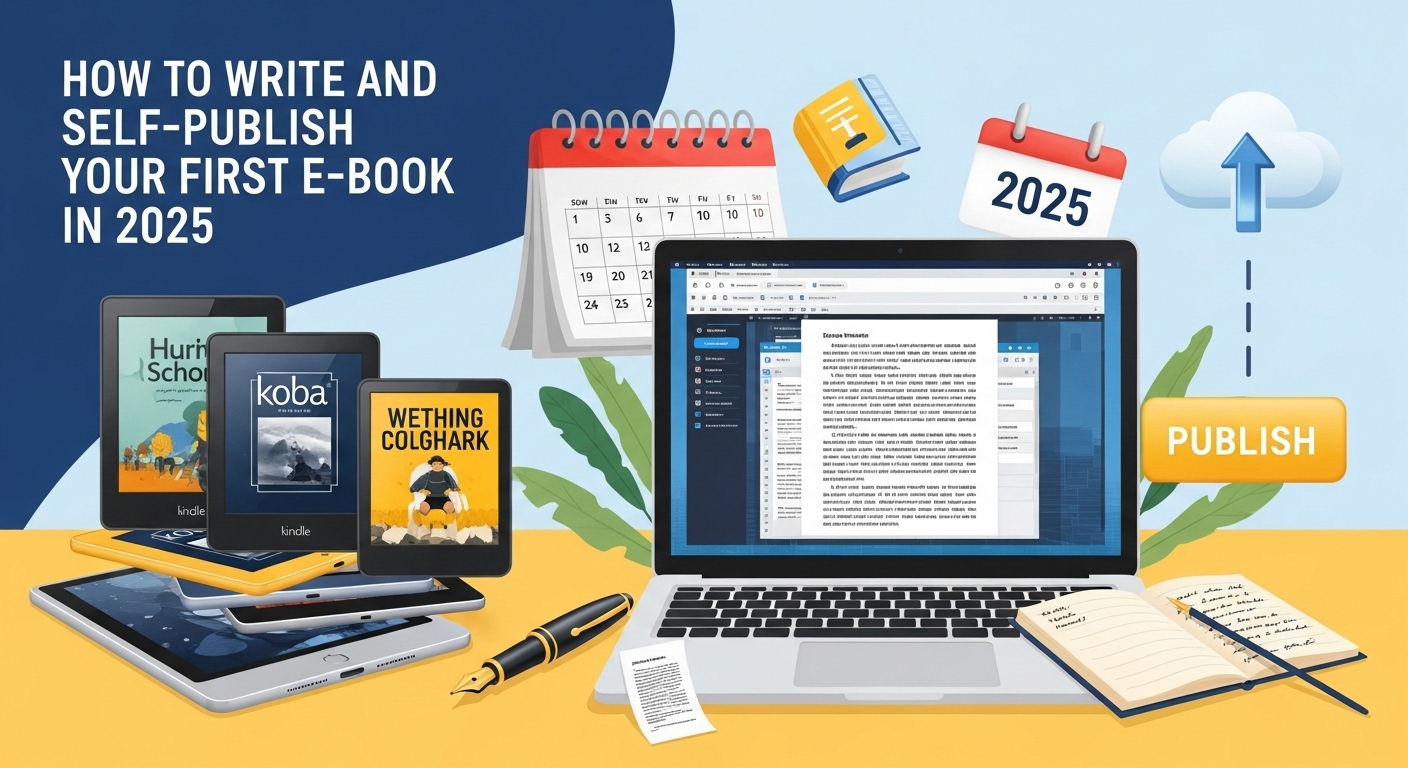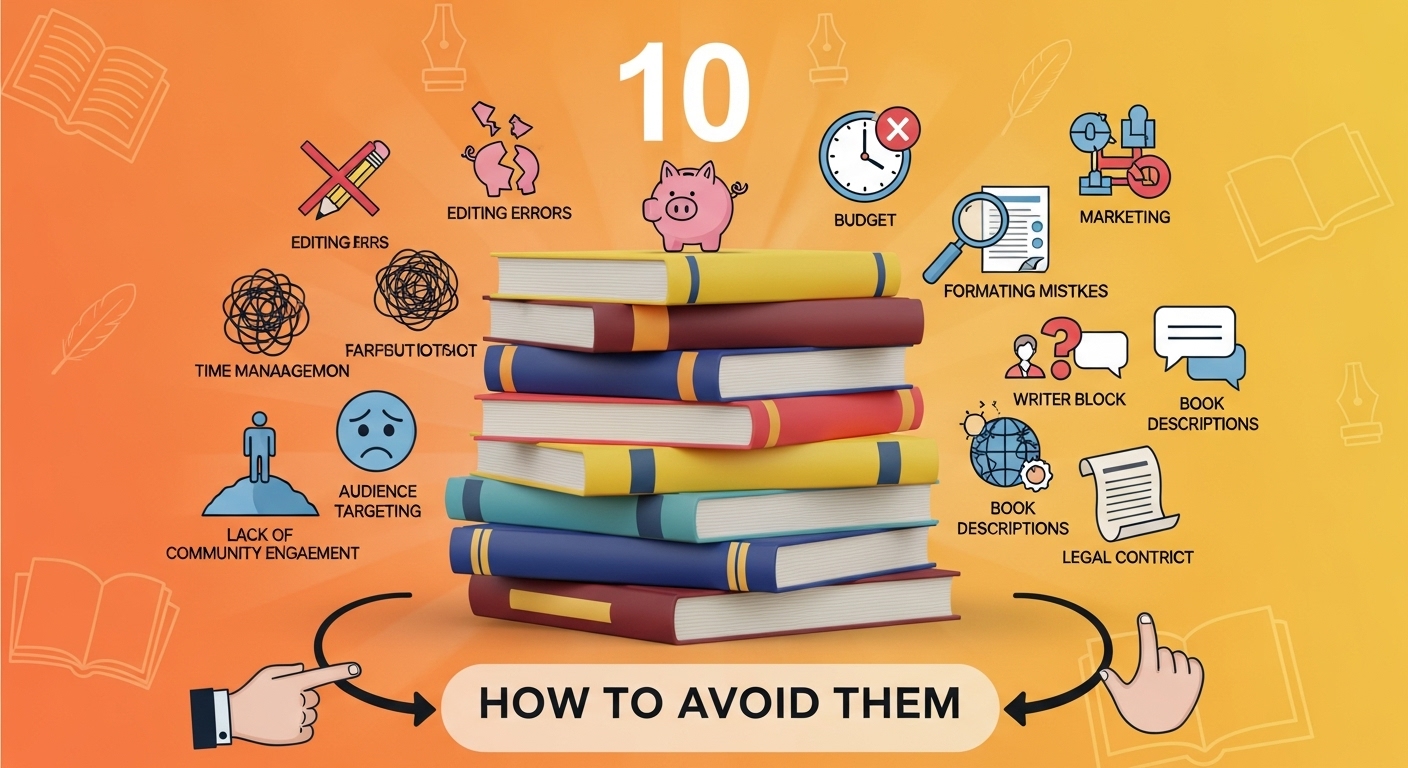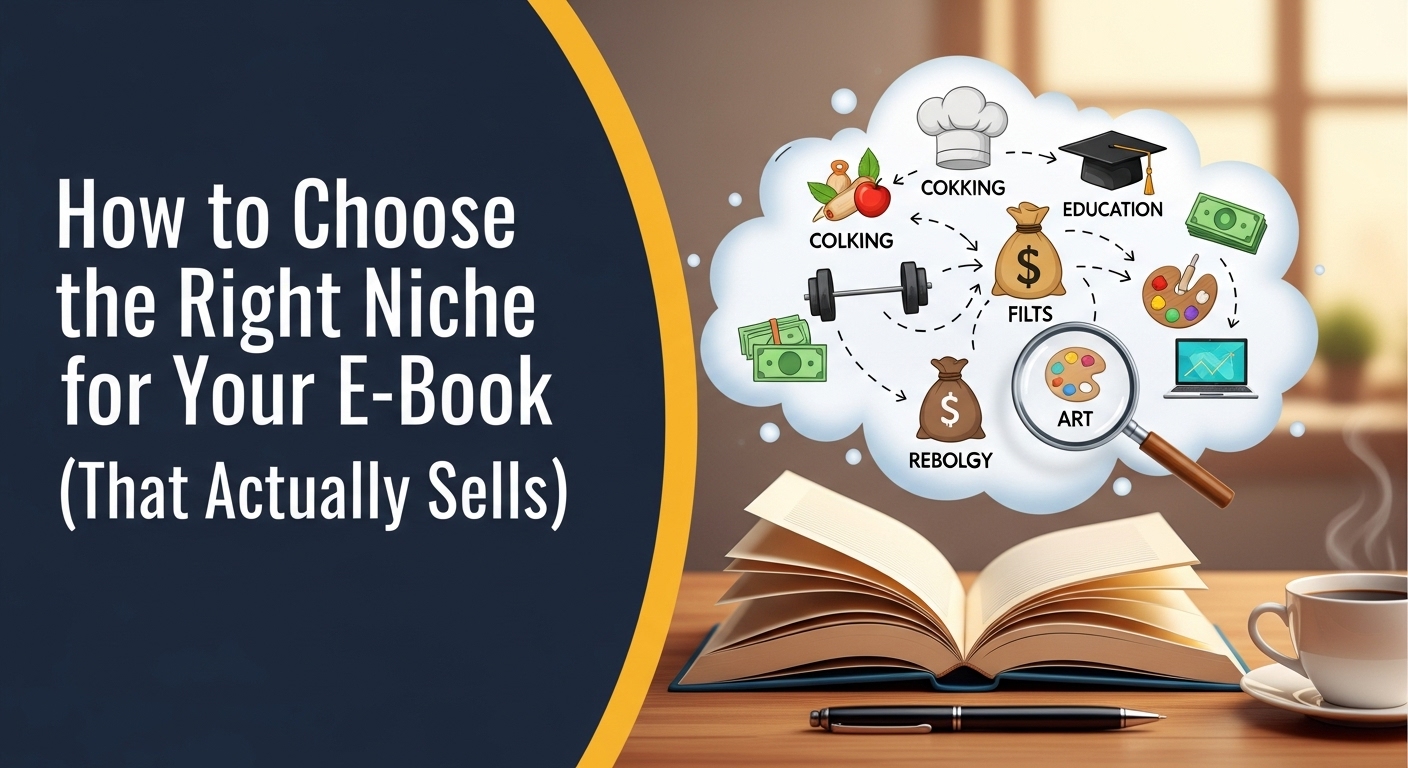Is 2025 the Year You Finally Become an Author?
Have you ever dreamed of seeing your name on the cover of a book? For many, the idea of becoming an author feels like a distant, almost unattainable goal. You might picture traditional publishing houses, gatekeepers, and years of rejection letters. But what if I told you that the path to authorship is more accessible now than ever before? Welcome to the revolutionary world of e-books & self-publishing, a landscape that empowers creators like you to share their stories and expertise with the world, on their own terms.
The digital revolution has completely transformed the publishing industry. In 2025, you don’t need a major publishing deal to reach a global audience. All you need is a great idea, the dedication to write it, and a roadmap to navigate the self-publishing process. This guide is that roadmap. We’ll walk you through every single step, from the first spark of an idea to the exciting moment you hit ‘publish’ and beyond. Forget the barriers; it’s time to turn your author dreams into reality. Let’s get started!
Step 1: Ideation and Planning – Finding Your Winning Idea
Before you type a single word, you need a solid foundation. A successful e-book isn’t just written; it’s planned. This initial phase is crucial for setting yourself up for success and ensuring your book resonates with readers.
Brainstorming Your E-Book Topic
The best e-book ideas often lie at the intersection of three things: what you’re passionate about, what you’re knowledgeable about, and what people are willing to pay for. Start by brainstorming. Grab a notebook or open a document and let your ideas flow freely. Ask yourself:
- What topics do I love talking about?
- What skills or expertise do I possess?
- What problems can I solve for people?
- What stories do I have to tell?
Don’t censor yourself at this stage. Write down everything, from a sci-fi epic to a guide on container gardening. The goal is to generate a list of potential topics that genuinely excite you. Writing a book is a marathon, and passion is the fuel that will get you to the finish line.
Validating Your Idea and Identifying Your Target Audience
Once you have a few promising ideas, it’s time to validate them. A great idea isn’t great if no one wants to read it. Start by doing some market research. Go to Amazon’s Kindle store and search for books in your chosen niche. Are there other books on the topic? This is a good sign! It means there’s an existing market. Look at the bestsellers. What are their covers like? What do their descriptions say? Most importantly, read the reviews—both positive and negative. This is invaluable feedback that tells you what readers love and what they feel is missing.
Next, define your ideal reader. Who are you writing for? Be as specific as possible. Are they a beginner programmer, a busy parent looking for quick recipes, or a fan of historical romance? Understanding your target audience will inform every decision you make, from your writing style to your marketing strategy.
Creating a Detailed Outline
Never underestimate the power of an outline. It’s the architectural blueprint for your e-book. An outline prevents writer’s block, ensures a logical flow, and keeps you from going off on tangents. Your outline can be as simple as a list of chapter titles with a few bullet points under each, or it can be a multi-page document with detailed scene or section breakdowns. For non-fiction, structure your chapters to guide the reader from one concept to the next. For fiction, map out your plot points, character arcs, and key scenes. This step will save you countless hours during the writing process.
Step 2: The Writing Process – From Blank Page to First Draft
With your plan in place, it’s time to do the actual writing. This is often the most challenging yet rewarding part of the journey. The key is to build momentum and get the words down on the page.
Setting a Writing Schedule and Sticking to It
Consistency is more important than intensity. You don’t need to write for eight hours a day. For most people, that’s unsustainable. Instead, set a realistic, achievable goal. This could be writing for 30 minutes every morning, hitting a 500-word count each day, or completing one chapter per week. The specific goal doesn’t matter as much as the act of showing up consistently. Treat your writing time as a non-negotiable appointment with yourself. Put it on your calendar, turn off distractions, and write.
Overcoming Writer’s Block
Every writer faces the dreaded blank page. If you find yourself stuck, don’t panic. Writer’s block is often a symptom of fear, perfectionism, or uncertainty. Refer back to your outline—it’s your best friend in these moments. If you’re stuck on one chapter, skip it and work on another part that excites you more. Try freewriting, where you just write whatever comes to mind without judgment for 10-15 minutes. Sometimes, the best solution is to step away. Go for a walk, listen to music, or work on a different creative project. Your brain will often solve the problem in the background.
Writing Your First Draft (Don’t Aim for Perfection)
This is the most critical advice for this stage: turn off your inner editor. The goal of the first draft is simply to exist. It’s about getting the story or information out of your head and onto the page. It will be messy. It will have typos. Some sentences will be clunky. That’s okay! You can’t edit a blank page. Give yourself permission to write a ‘terrible’ first draft. This mindset shift is liberating and is the secret to finishing your book. Just write.
Step 3: Editing and Polishing – The Secret to a Professional E-Book
Congratulations, you’ve finished your first draft! Take a moment to celebrate this huge accomplishment. Now, it’s time to transform that raw material into a polished, professional product. Editing is what separates amateur e-books from professional ones.
The Importance of Self-Editing
After finishing your draft, step away from it for at least a week, maybe even a month. You need to come back to it with fresh eyes. When you return, read through the entire manuscript. This is your developmental edit. Focus on the big picture: Does the story make sense? Is the pacing right? Are the arguments in your non-fiction book clear and well-supported? Make notes on major structural changes. Once you’ve revised the big-picture issues, you can move on to a line edit, where you focus on sentence structure, word choice, and clarity.
Hiring a Professional Editor (It’s Worth It!)
While self-editing is crucial, it’s nearly impossible to catch all your own mistakes. This is where a professional editor becomes invaluable. They provide an objective, expert perspective. There are different types of editors:
- Developmental Editor: Looks at the overall structure, plot, and character development.
- Copy/Line Editor: Focuses on grammar, syntax, punctuation, and consistency.
- Proofreader: The final check for typos and formatting errors before publication.
If your budget is tight, at the very least, invest in a good copy editor or proofreader. This single investment can dramatically increase the quality and professionalism of your e-book.
Step 4: Design and Formatting – Creating an Experience
People absolutely judge a book by its cover, especially in the crowded digital marketplace. The design and formatting of your e-book are critical for attracting readers and providing them with a seamless reading experience.
Designing an Eye-Catching E-Book Cover
Your cover is your number one marketing tool. It needs to look professional, be genre-appropriate, and be legible even as a tiny thumbnail image. Unless you are a professional graphic designer, this is another area where it pays to hire a professional. You can find talented cover designers on platforms like Reedsy, 99designs, or Fiverr at various price points. A great cover signals to readers that you’ve invested in a quality product.
Formatting Your Manuscript for E-Readers
Proper formatting ensures your book looks good on any device, from a Kindle to a smartphone. You need to create a file that is clean, readable, and reflowable. This means using standard fonts, clear chapter breaks, and a clickable table of contents. You can format it yourself using software like Scrivener, Vellum (Mac-only), or the Kindle Create tool. Alternatively, you can hire a formatter to handle the technical aspects for you, ensuring your file is perfect for every platform.
Step 5: The Self-Publishing Process – Going Live!
The moment has arrived! It’s time to upload your masterpiece and share it with the world. Navigating the world of e-books & self-publishing platforms is your final technical hurdle.
Choosing Your Self-Publishing Platform
The largest platform by far is Amazon’s Kindle Direct Publishing (KDP). Publishing on KDP gives you access to Amazon’s massive global audience. You can choose to be exclusive to Amazon through KDP Select, which offers promotional tools like Kindle Unlimited, or you can ‘go wide’ and publish on other platforms as well. Other popular platforms include Apple Books, Kobo Writing Life, and aggregators like Smashwords or Draft2Digital, which distribute your book to multiple smaller retailers for you.
Writing a Compelling Book Description (Blurb)
Alongside your cover, your book description is your most important sales tool. It needs to hook the reader, introduce the central conflict or promise of the book, and end with a compelling reason to buy it. Study the descriptions of best-selling books in your genre. Use strong, active language and break up the text into short, easy-to-read paragraphs.
Setting Your Price and Royalties
Pricing is both an art and a science. Research comparable e-books in your genre. A common price range for indie e-books is $2.99 to $9.99. On KDP, pricing your book between $2.99 and $9.99 earns you a 70% royalty. Pricing outside that range drops your royalty to 35%. Consider running introductory price promotions to attract early readers and reviews.
Your Author Journey Starts Now!
You now have the complete step-by-step guide to writing and self-publishing your first e-book. We’ve covered everything from brainstorming your initial idea to planning, writing, editing, designing, and finally, publishing. It might seem like a lot, but remember that this is a journey, not a race. Every step you take, every word you write, brings you closer to your goal.
The world of e-books & self-publishing has opened the door for anyone with a story to tell. The only thing standing between you and your dream of being an author is action. Don’t wait for permission. Don’t wait for the ‘perfect’ time. The time is now. Open that new document, write down your first idea, create your outline, and commit to your writing schedule. Take that first step today, and by this time next year, you could be holding your published e-book in your hands—or rather, on your screen. What are you waiting for?


